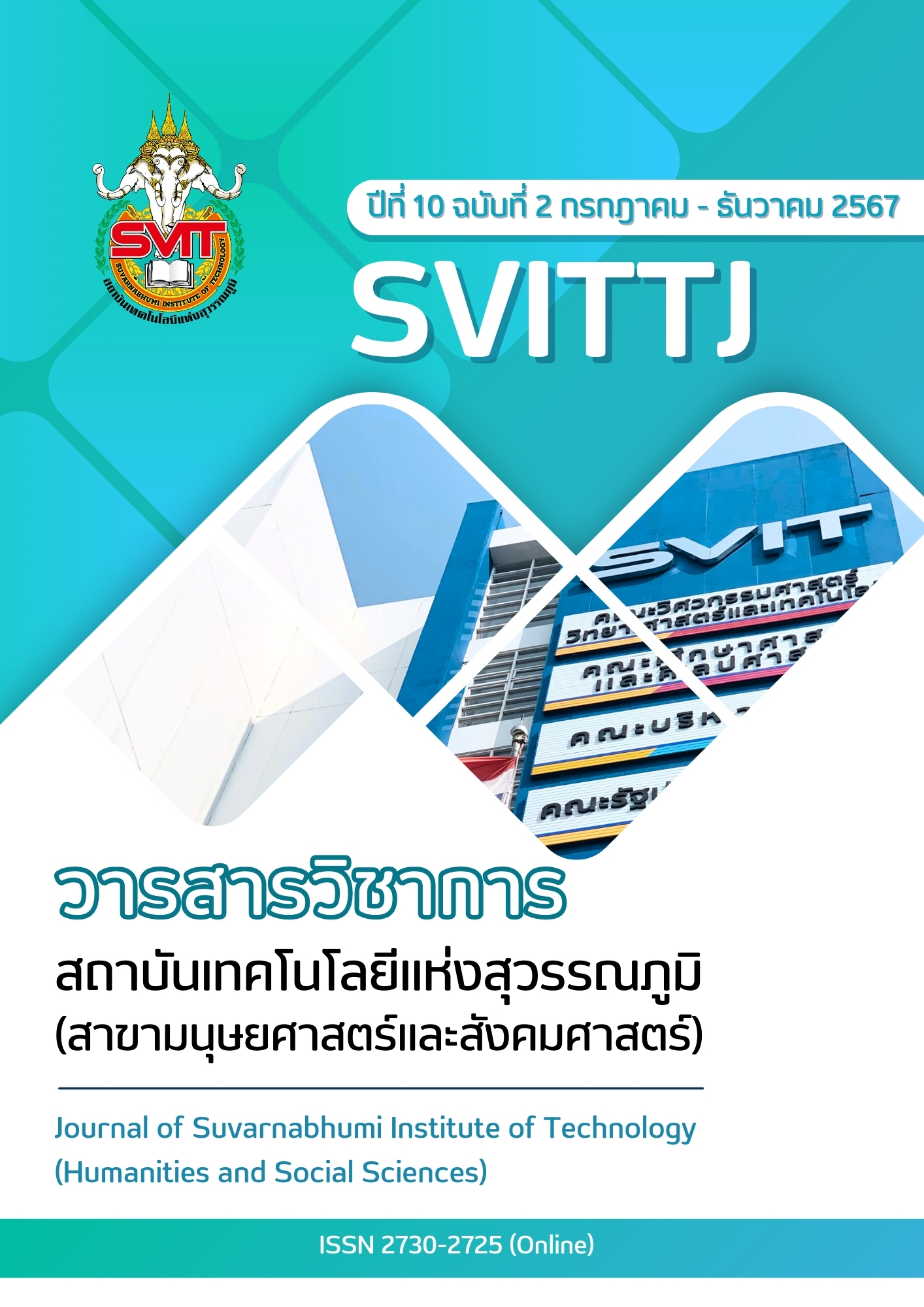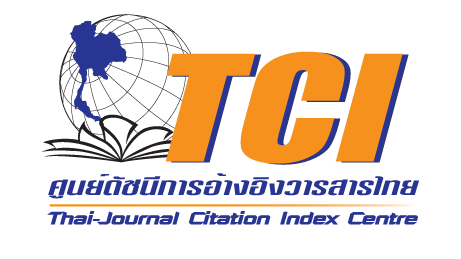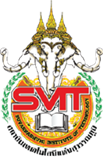THE REQUIREMENT OF CLOSED CIRCUIT TELEVISION SYSTEM INSTALLATION FOR ENTREPRENEURS IN MANUFACTURING AND SERVICE SECTORS THAT USING 3 NATIONALITIES OF WORKERS IN THE EASTERN ECONOMIC CORRIDOR
-
Keywords:
Closed Circuit Television System (CCTV), Artificial Intelligence (AI), IP Camera, Motion Detection, License Plate RecognitionAbstract
This research aims to study the current situation and problems of using Closed-Circuit Television (CCTV) systems and to study the needs of installation for CCTV systems in order to find ways to develop CCTV systems aligned with the needs of entrepreneurs in the manufacturing and service sector that employs 3 nationalities in the Eastern Economic Corridor (EEC) zone. The research theoretical used in this study is qualitative research by conducting in-depth interviews with 24 key informants. The research findings indicate that CCTV systems effectively meet the objectives of installation. All entrepreneurs use recordings of CCTV system as evidence in incident investigations. Additionally, CCTV systems can reduce problems of property loss, employees time thief, reduced incident investigation period of time and crime problems. The need of installation for CCTV system indicates the important features such as the use of new technologies, system reliability, continuous operation, durability, intact signal, multiple data recording formats, notification systems, clear images, night vision capabilities, affordable prices, and good after-sales service. Suggestions for developing CCTV systems include utilizing Artificial Intelligence (AI) and features to assist in CCTV operation, such as motion detection, facial recognition, license plate recognition, and metal detection. Cloud record capability without recording on devices and ability of manage tasks over the internet allowing accessed from anywhere.
References
กรมพัฒนาธุรกิจการค้า กองข้อมูลธุรกิจ. (2565). ข้อมูลธุรกิจในพื้นที่การพัฒนาระเบียงเศรษฐกิจพิเศษภาคตะวันออก. สืบค้นจาก https://www.dbd.go.th/download/article/article_20230125144446.pdf
กิตติ์ธนทัต เลอวงศ์รัตน์, ปพัฒน์ วสุธวัช, ก้องปิติ อ่อนมาก, และอนิษา เลิศโตมรสกุล. (2562). การพัฒนาประสิทธิภาพในการนำเทคโนโลยีกล้องโทรทัศน์วงจรปิด (CCTV) มาใช้ในการสนับสนุนการบริหารงานของสถานีตำรวจของกองบัญชาการตำรวจนครบาล. สำนักงานคณะกรรมการส่งเสริมวิทยาศาสตร์ วิจัยและนวัตกรรม.
ไกรพล ดีแก้ว. (2562). บทบาทของกล้องโทรทัศน์วงจรปิด (CCTV) ในการป้องกันการเกิดอาชญากรรม ในความผิดเกี่ยวกับทรัพย์ กรณีศึกษาถนนข้าวสาร มหาวิทยาลัยรังสิต. ใน งานประชุมวิชาการระดับชาติ มหาวิทยาลัยรังสิต ประจำปีการศึกษา 2562. Doi: 10.14458/RSU.res.2019.337
ภาณุเดช ทิพย์อักษร, อรรถพล วิเวก และอนุพงศ์ ไพโรจน. (2565). การประยุกต์ใช้งานแอปพลิเคชั่นปัญญาประดิษฐ์ร่วมกับอินเทอร์เน็ตของสรรพสิ่งบนคลาวด์ในอาคารอัจฉริยะ. วารสารวิศวกรรมศาสตร์ มหาวิทยาลัยเทคโนโลยีราชมงคลล้านนา, 7(1), 52-61.
มติชนออนไลน์. (2565, 5 เมษายน). กล้องตรวจจับความร้อนเครื่องจักร เครื่องมือสำคัญเพื่อความปลอดภัย.
รณภพ สวัสดิ์กิจ. (2562). ปัจจัยด้านองค์กรที่มีผลต่อการตัดสินใจซื้ออุปกรณ์กล้องโทรทัศน์วงจรปิดขององค์กรผู้วางระบบในเขตกรุงเทพมหานคร. (การค้นคว้าอิสระปริญญามหาบัณฑิต, มหาวิทยาลัยเทคโนโลยีราชมงคลธัญบุรี).
สถาบันส่งเสริมความปลอดภัยอาชีวอนามัยและสภาพแวดล้อมในการทำงาน. (2562). เสริมความแข็งแกร่งพื้นที่ EEC งานความปลอดภัย-อาชีวอนามัยสู่ภาคตะวันออก. สืบค้นจาก https://osh8.labour.go.th/2015-12-03-04-55-08/778-24-05-2562
สำนักงานกองทุนเงินทดแทน สำนักงานประกันสังคม. (2564). สถานการณ์การประสบอันตรายหรือเจ็บป่วยเนื่องจากการทำงาน ปี 2560 - 2564. สืบค้นจาก https://www.sso.go.th/wpr/assets/upload/files_storage/sso_th/84b88f068b29c808bf3efe3302802234.pdf
สำนักงานการวิจัยแห่งชาติ. (2565). ระบบตรวจจับบุคคลที่อำพรางอาวุธปืนผ่านกล้องวงจรปิด. สืบค้นจาก https://www.facebook.com/223544917771088/posts/4584281405030729/
สำนักงานคณะกรรมการนโยบายเขตพัฒนาพิเศษภาคตะวันออก. (2565). แผนยุทธศาสตร์-แผนปฏิบัติงาน สกพอ. ประจำปี 2565. สืบค้นจาก https://www.eeco.or.th/th/filedownload/3165/dc3622708d6082623039d62ba35aa187.pdf
สำนักบริหารแรงงานต่างด้าว. (2566b). สถิติจำนวนต่างด้าวที่ได้รับอนุญาตทำงานคงเหลือทั่วราชอาณาจักร. กรมการจัดหางาน กระทรวงแรงงาน. สืบค้นจาก https://www.doe.go.th/prd/assets/upload/files/alien_th/48aa60a778337340d07056333874a48d.pdf
Cho H, Lee K, Choi N, Kim S, Lee J, & Yang S. (2022). Online Safety Zone Estimation and Violation Detection for Nonstationary Objects in Workplaces. IEEE, 10, 39769-39781.
Green, J. & Thorogood, N. (2009). Qualitative methods for health research (2nd ed.). Thousand Oak, CA: Sage.
Guest, G., Bunce, A., & Johnson, L. (2006). How many interviews are enough?: An experiment with data saturation and variability. Field Methods, 18(11), 59-82.
Paola C, Filippo M, & Marco A. (2016). Video surveillance systems to enhance occupational safety: A case study. Safety Science, 84, 140-148.
Rovinelli, R.J. and Hambleton, R.K. (1977). On the Use of Content Specialists in the Assessment of Criterion-Referenced Test Item Validity. Tijdschrift Voor Onderwijs Research, 2 (2), 49-60.
Downloads
Published
Issue
Section
License
Copyright (c) 2024 Suvarnabhumi Institute of Technology

This work is licensed under a Creative Commons Attribution-NonCommercial-NoDerivatives 4.0 International License.
บทความที่ได้รับการตีพิมพ์เป็นลิขสิทธิ์ของวารสารวิชาการ สถาบันเทคโนโลยีแห่งสุวรรณภูมิ
ข้อความที่ปรากฏในบทความแต่ละเรื่องในวารสารวิชาการเล่มนี้เป็นความคิดเห็นส่วนตัวของผู้เขียนแต่ละท่านไม่เกี่ยวข้องกับสถาบันเทคโนโลยีแห่งสุวรรณภูมิ และคณาจารย์ท่านอื่นๆในสถาบันฯ แต่อย่างใด ความรับผิดชอบองค์ประกอบทั้งหมดของบทความแต่ละเรื่องเป็นของผู้เขียนแต่ละท่าน หากมีความผิดพลาดใดๆ ผู้เขียนแต่ละท่านจะรับผิดชอบบทความของตนเองแต่ผู้เดียว





